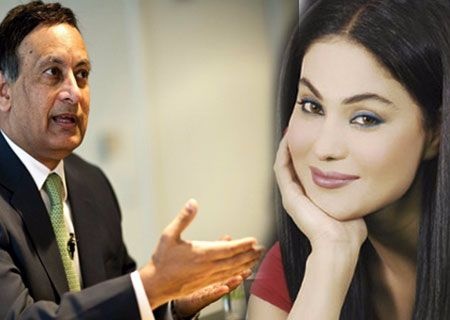
The truth is incontrovertible, they say. Malice may attack it, ignorance may mock it, but in the end, there it always is – except in Pakistan: the country where facts go to die.
Res ipsa loquitur? Not here, it doesn’t. Consider.
What do Memogate, the Mohmand Nato attacks and the publication of Veena Malik’s outré covers have in common? (No, it’s not only that talk of all three is so inextricably wrapped up in nationalism it borders on the comical.) What they hold in common is the scandalous role the electronic media has played in manufacturing uncertainty. Mediagate, hello?
Let’s start with Veena. The ‘facts’: a magazine cover of the model-actress wearing nothing but an ISI tattoo; another one of her in an underwear version of battle fatigues, hand grenade pin between teeth, that one ominous word, ISI, hissing across her arm.
Nearly a week after the pictures first appeared, who can say with any degree of certainty if they were doctored or not? If Veena had ever really agreed to pose in the buff? Whether the ISI tattoo was her idea? Whether she even knew ISI stood for the Inter-Services Intelligence and not for 56 other institutions in India?
It’s hard to answer even the basic questions when the facts are an ever-shifting creature on our TV screens.
Bullets and bombs rained down on Pakistan until two check posts were destroyed and 24 soldiers lay dead. The Nato attackers engaged their targets; disengaged; re-engaged. It was a deliberate act of aggression. The DG MO has said so. The New York Times headline reads: “Obama refrains from a formal ‘I’m sorry’ to Pakistan.” The second insult? It all makes sense. Arrogance accompanies strength. Justice is seldom on the side of the weak. Right is only in question between equals in power. The strong do what they can and the weak suffer what they must.
Platitudes. Half-truths. Sanctimonious drivel peddled as fact. The spectre of truth attended by a bodyguard of lies. The guardians of our guardians earning their daily bread on the nightly circus of TV channels. But no answers to the real questions:
What evidence do the Americans have to prove the strikes were an accident? What would coalition forces gain from a deliberate attack? What about the US claims that Pakistan okayed the strikes? What about Pakistan’s claims that it pleaded with the attackers to stop? Where are the Taliban in all this? Isn’t the Baizai area where the check posts were located a notorious hotbed of militant activity? Is the US trying to see how far it can push Pakistan as 2014 approaches? Is Pakistan now using the attacks to get its way on Afghanistan?
Forget answers – no one even wants to ask the questions here. Which brings us to Memogate, the scandal of all scandals, about which even the most basic questions are yet to be answered but the door to the gallows is already creaking ominously. Denouement before Act 1? Coming to a news channel near you – only in Pakistan.
No doubt, the Pakistani electronic media has fought brave and hard in recent years, helping hold both the bad boys and the bumbling civilians up to the sunlight, exposing the deep wounds they have inflicted on the country. On a split-screen of images, we have seen the rotating cast of characters named and shamed.
The scale and scope of the electronic media’s impact has been profound but therein also lies the paradox: while leading the jangle of breaking news and primetime talking points, the media has also fallen silent – it has fallen silent in its role as adjudicator. In an attempt to give the appearance of no-fear, no-favour journalism, TV channels will bring on anyone who has fangs to bare and a dinnertime rant to offer to the millions raised on a bilious diet of distortion and dogma.
It’s a scandal.
Was the media meant only to be a passive conduit for information, abandoning the viewer in the vast savannahs of messages that have the power to inform and manipulate in equal measure? Was the free media just supposed to supply the stuff of thought, or also to shape the process of thought itself? To ask the right questions, to point out the possible motives of the message, the back-story undergirding the main story?
This may explain the confusion surrounding even the mundane: that the media here has no interest in pushing viewers to jump deep into the sea of news; it’s quite content just letting them whiz along the surface as if on a jet ski. It’s okay with people stumbling over the truth and quickly picking themselves up and hurrying off as if nothing had happened. This is the hangover of a ‘vibrant’ and ‘free’ electronic media in Pakistan: an entire mass of half-frightened, half-indifferent people who believe in everything but have faith in nothing.
Understandably, some would argue the opposite: that the media here has become too pushy, that it is indeed shaping people’s thoughts but in all the wrong ways, by asking all the wrong questions. After all, no one has as yet forgotten the P Y T host who implied a governor was committing blasphemy by calling to reform a controversial set of laws.
Alas, the cost of living in a land where truth goes to die.



